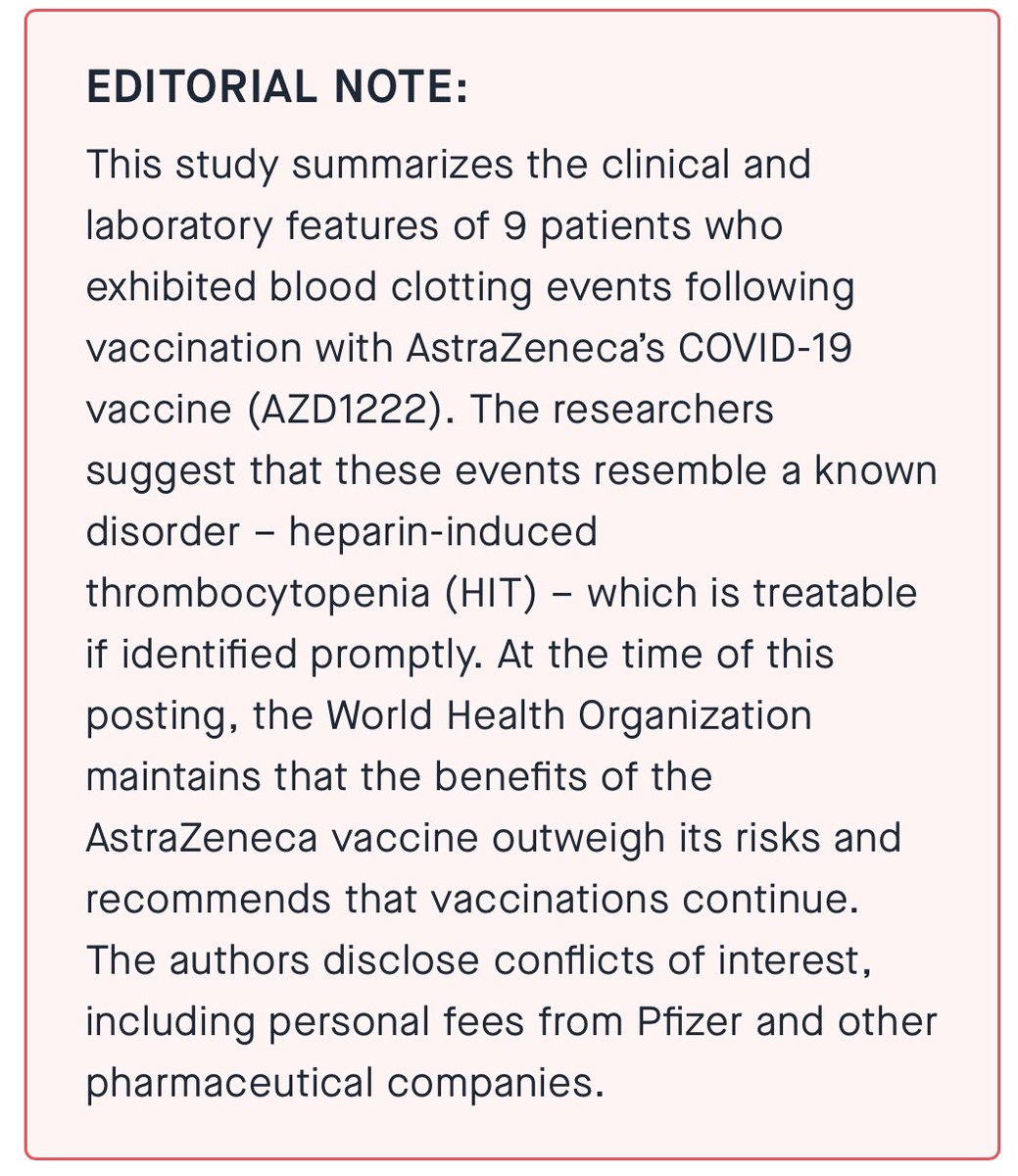
"I want to start by stating that our safety committee the pharmacovigilance risk assessment committee of the European Medicines Agency has confirmed that the benefits of the AstraZeneca vaccine in preventing #COVID19 overall outweigh the risks of side effects”, says Emer Cooke.
“The PRAC, after a very in depth analysis, has concluded that the reported cases of unusual blood clotting following vaccination with the AstraZeneca vaccine should be listed as possible side effects of the vaccine”, says Cooke.
“Based on the current available evidence, specific risk factors such as age, gender, or previous medical history of clotting disorders have not been able to be confirmed as the rare events are seen in all ages, and in men and women”, says Cooke.
“Any national decision on the optimal use in vaccination campaigns will also take into account the pandemic situation in any individual country, and other factors such as hospitalization and availability of vaccines”, says Cooke.
PRAC did an in-depth analysis of 62 cases of cerebral venous sinus thrombosis and 24 cases of splanchnic vein thrombosis reported in the EU drug safety database, 18 of which were fatal, says Sabine Straus.
"As of April 4, 2021, the new drug safety database had received a total of 169 cases of CVST and 53 of splenic vein thrombosis. And at that moment 34 million people were vaccinated in the European Economic Area, and the UK”, says Straus.
“Our conclusion is that these clotting disorders are very rare side effects of the vaccine”, says Straus. "The currently available data did not allow us to identify a definite cause for these complications."
“Plausible explanations have been put forward, including an immune response that leads to a condition that seems similar to an atypical heparin induced thrombocytopenia”, says Straus.
“No specific risk factors could be identified based on the current data. The committee can therefore not recommend any specific measures to reduce the risk”, says Straus.
“We have seen that it predominantly affects women”, ays Cooke. But "some of that could be explained by the way that the vaccine is being used in the European Union and the European Economic Area”.
"The frequency is difficult to assess”, says Straus, but also mentions" approximately one in 100,000, or even a little bit higher”. Says based on this national vaccination authorities “can make up their minds on how they would like to vaccinate with which kind of vaccine".
Q: Does benefit also outweigh risks if you look only at women below 60 years of age?
Straus: "At the moment, that's something that's very difficult to answer … part of our further research and further investigation concerning this vaccine, but we do know that risk is very low."
Straus: "At the moment, that's something that's very difficult to answer … part of our further research and further investigation concerning this vaccine, but we do know that risk is very low."
Situation will keep evolving as more information becomes available, as groups being vaccinated change etc, says Emer Cooke. “So we can expect that there will be new information and new recommendations as time goes on."
“PRAC will be imposing on AstraZeneca, the manufacturer of the vaccine, a number of studies to ensure that we get robust data to further evaluate this safety issue”, says Arlett:
1. mechanistic studies in the lab to understand interaction with clotting systems
2. look at existing data foreclosed clinical trials for any further information on possible risk factors
3. ongoing clinical trials should collect data to further help clarify issue
2. look at existing data foreclosed clinical trials for any further information on possible risk factors
3. ongoing clinical trials should collect data to further help clarify issue
“We are not relying just on the company”, says Arlett. EMA supporting studies to be conducted by two large consortia, led by unniversities in Rotterdam and Utrecht. "We would anticipate results starting to come in from those over the next couple of months."
I asked about 1/100,000 vs. 1/250,000
Reported rate "varies very much with how good the reporting system in a member state is and how good cases are being identified”, says Straus. “In Germany, a lot of work has been done and I think there is a reporting rate of 1 in 100,000."
Reported rate "varies very much with how good the reporting system in a member state is and how good cases are being identified”, says Straus. “In Germany, a lot of work has been done and I think there is a reporting rate of 1 in 100,000."
“We know that in the UK the reporting rate is much lower, so that can have many many causes, but for the moment I think it's safe to assume that the reporting rate is around one in 100,000”, says Straus.
*splanchnic vein thrombosis
• • •
Missing some Tweet in this thread? You can try to
force a refresh





